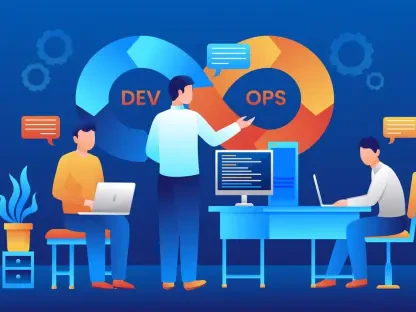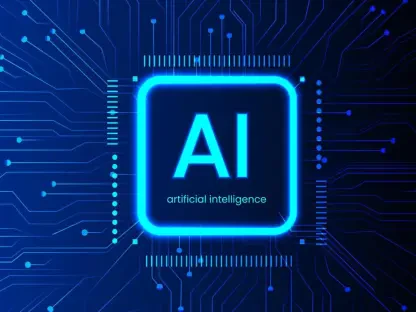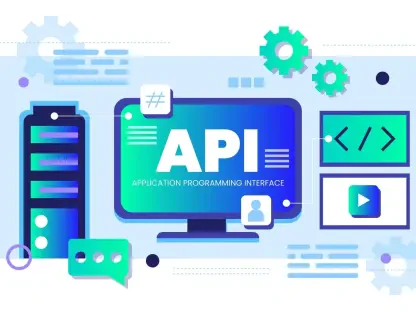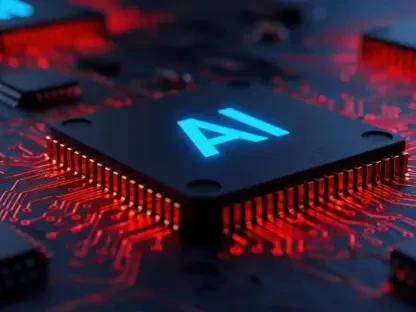The realm of software development stands at a pivotal crossroads, grappling with the transformative yet turbulent impact of artificial intelligence. As of 2025, industry reports reveal that over 60% of developers rely on AI tools for coding tasks, a staggering leap driven by the promise of efficiency and innovation. Yet, beneath this enthusiasm lies a pressing concern: the unpredictability and complexity introduced by AI, particularly Large Language Models (LLMs), often derail projects rather than streamline them. This tension between potential and pitfalls sets the stage for a critical examination of whether a groundbreaking structural model can address these challenges and secure AI’s place in the future of coding.
The Current State of AI in Software Development
The integration of AI into software development has reshaped the industry, with LLMs becoming central to modern coding practices. These models, capable of generating code snippets and suggesting solutions, have been embraced by developers seeking to accelerate workflows. Major tech giants and platforms like GitHub have heavily invested in AI tools, positioning them as indispensable aids for tackling repetitive tasks and boosting productivity across diverse projects.
Beyond corporate backing, the scope of AI-assisted coding continues to expand, influencing everything from individual developers to large-scale enterprise solutions. Statistics indicate a significant uptick in usage, with millions of developers leveraging these tools daily to write, debug, and optimize code. This widespread adoption underscores AI’s growing significance, as it promises to redefine efficiency standards in an increasingly competitive field.
Technological trends further fuel this shift, with languages like TypeScript gaining traction due to their compatibility with AI-driven environments. The synergy between such languages and AI tools enables smoother integration and more dynamic coding experiences. However, while the momentum is undeniable, the industry must confront underlying issues to ensure that this technological wave does not falter under its own weight.
Challenges and Trends in AI-Driven Coding
Key Issues with LLM Integration
Despite the enthusiasm surrounding LLMs, their integration into coding workflows reveals critical shortcomings. A primary concern is the lack of incrementality, where AI-generated code struggles to build functionality step by step without disrupting existing systems. Additionally, issues of integrity and transparency persist, as developers often find it difficult to understand or trust the logic behind AI outputs, leading to potential errors in critical applications.
Another challenge lies in the phenomenon dubbed “vibe coding,” characterized by unpredictable results that defy control. This erratic nature means that each AI intervention risks breaking prior functionality, creating a ripple effect of instability. Such unpredictability frustrates developers who must constantly troubleshoot rather than innovate, highlighting a fundamental mismatch between AI capabilities and practical needs.
Programmers also express dissatisfaction with LLM-generated patches, which frequently fail to align with project goals. In whole-app development scenarios, these models often hit undefined limits, unable to scale or adapt as requirements evolve. This growing frustration signals a pressing need for solutions that can harness AI’s potential while mitigating its disruptive tendencies.
Market Impact and Growth Data
Market data paints a clear picture of increasing reliance on AI tools, with platforms like GitHub reporting a surge in usage among developers worldwide. Over the past year, the adoption rate of AI-assisted coding features has risen sharply, reflecting a broader industry trend toward automation. This dependency is expected to grow further, with projections estimating even higher integration rates by 2027.
However, these challenges pose a risk of limiting LLMs’ long-term role if left unaddressed. Without mechanisms to ensure reliability and predictability, the technology’s potential could be stunted, leaving developers wary of over-reliance. Industry analysts caution that unresolved issues may hinder trust, slowing down the pace of innovation in critical sectors.
Despite these hurdles, the growth trajectory of AI-assisted coding remains robust, driven by continuous advancements and developer demand. Forecasts suggest that structural solutions could unlock new levels of efficiency, addressing current shortcomings while paving the way for sustainable integration. The urgency to refine these tools has never been more apparent, as the industry balances ambition with practicality.
Shortcomings of Modern Software Practices
Modern software development grapples with inherent flaws that predate AI’s rise but are magnified by its adoption. Illegible code, where the connection between logic and observable behavior is obscured, remains a persistent issue. This lack of clarity complicates maintenance and collaboration, creating bottlenecks even in well-resourced teams.
The introduction of LLMs often exacerbates these problems by adding layers of complexity. Generated code can break existing features, as AI lacks the contextual awareness to preserve system integrity. Such disruptions highlight a broader concern: current practices struggle with modularity, making it difficult to isolate and manage components without unintended consequences.
Addressing these obstacles requires rethinking foundational approaches to software design. Strategies that prioritize clarity and separation of concerns could mitigate the chaos introduced by AI tools. This sets the stage for exploring innovative frameworks capable of aligning technology with the demands of coherent, maintainable development.
A New Structural Model for AI Coding
A promising solution emerges from the work of MIT researchers Eagon Meng and Daniel Jackson, who propose a structural model centered on “concepts” as modular, user-facing units of functionality. These concepts, such as “post” or “friend” in a social media app, provide clear, recognizable value while organizing both user experience and underlying code. This approach aims to bridge the gap between human understanding and technical implementation.
Central to this model are “synchronizations,” explicit contracts that define how concepts interact with one another. By establishing predictable and verifiable relationships, synchronizations enhance control over feature interactions, reducing the risk of errors. This mechanism also opens the door for AI tools to generate or analyze these contracts, fostering a more reliable coding process.
The benefits of this framework are manifold, including improved legibility that aligns software with intuitive understanding. It supports distributed implementations by allowing concepts to operate across different servers while maintaining consistency. Furthermore, the idea of “concept catalogs”—repositories of reusable, standardized components—offers a vision for streamlined development, benefiting both human coders and AI systems alike.
Future Directions for AI and Software Development
This structural model holds transformative potential, reshaping coding by aligning software with human intuition. By prioritizing transparency and modularity, it could enable developers to navigate complexity with greater ease, fostering systems that are easier to read and maintain. Such a shift promises to redefine how teams approach problem-solving in an AI-driven landscape.
Emerging possibilities include AI tools that generate reliable, verifiable code within structured frameworks. Unlike current erratic outputs, these tools could adhere to defined concepts and synchronizations, ensuring consistency across applications. This evolution would mark a significant departure from today’s trial-and-error approach, grounding innovation in disciplined design.
Broader influences, such as cultural shifts in coding practices, also come into play. Balancing the drive for rapid experimentation with the need for structure will be crucial as the industry matures. Embracing this model could encourage a move toward disciplined methodologies, ensuring that AI’s role in development is both innovative and sustainable over time.
Conclusion and Path Forward
Looking back, the exploration of AI’s role in software development revealed critical flaws that have hindered progress, from unpredictable outputs to systemic complexity. The structural model proposed by Meng and Jackson stands out as a beacon of hope, offering a pathway to address these challenges through modularity and transparency.
Moving forward, the industry must prioritize the adoption of concept-based frameworks to stabilize AI integration. Investment in standardized tools, such as concept catalogs, emerges as a vital step to promote reuse and consistency. These efforts could ensure that AI evolves into a reliable partner in coding.
Additionally, collaboration between academia, industry leaders, and developers is deemed essential to refine and scale this model. By fostering dialogue and testing real-world applications, stakeholders could unlock AI’s full potential, transforming software development into a more intuitive and robust discipline for generations to come.









